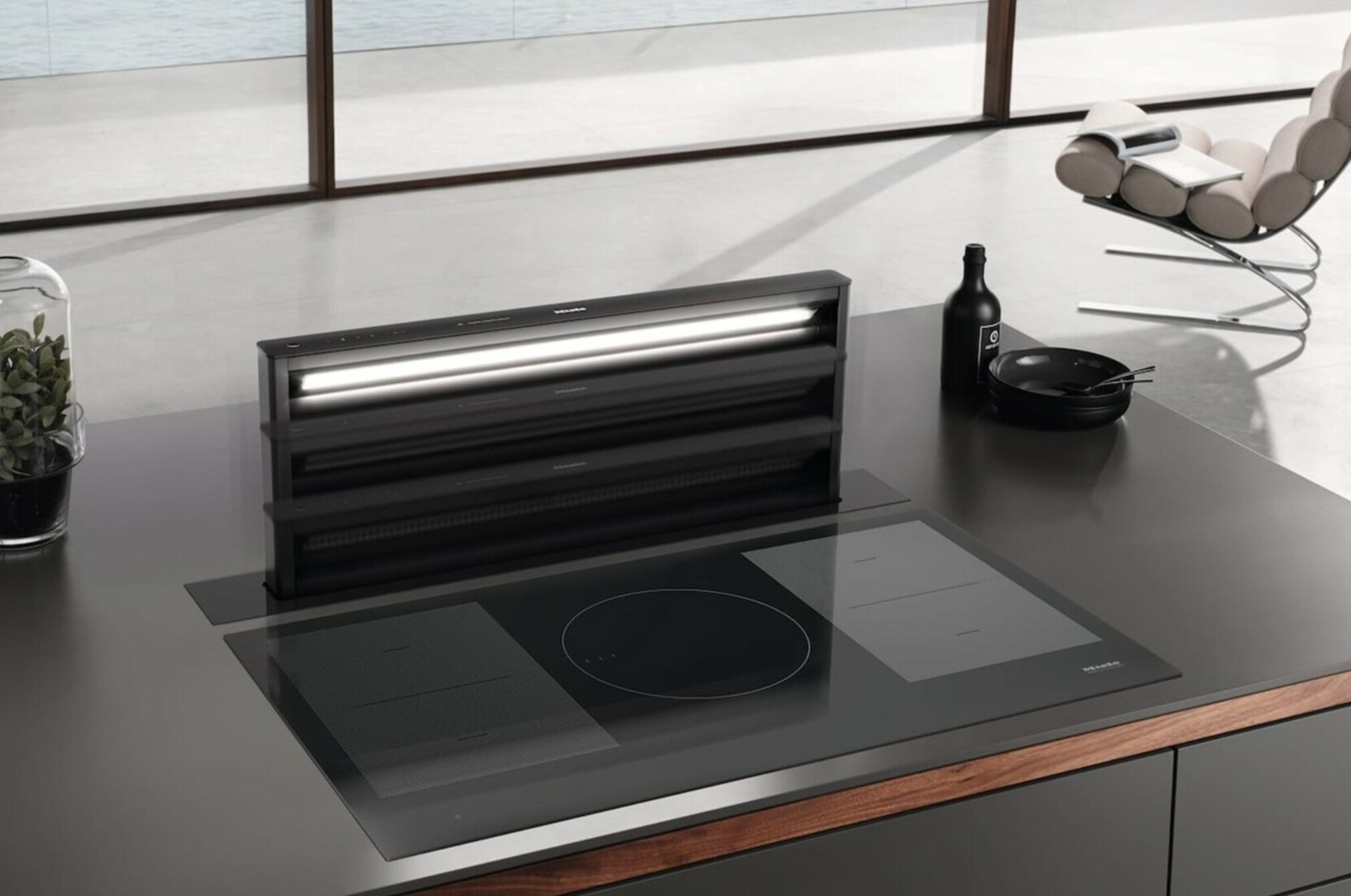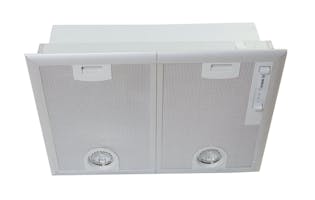What’s a downdraft kitchen extractor, and is it worth the extra cost?

Your standard rangehood lives above the kitchen cooktop and sucks up any nasty odours and moisture that float up from your pans. But there is another type of hood for those of you who don’t like clonking your heads on sharp stainless-steel corners every time you get your risotto grains on the boil. It’s called the downdraft.

The downdraft kitchen extractor
The downdraft extractor (or ventilator) usually sits at the rear of the cooktop. When it is turned on, it rises to reveal the extractor ports, which suck in steam and smells.
Most downdraft models are narrow metal units, but there are a few über-sleek glass versions. These have a glass panel that rises to deflect moisture down into the ports at the base.
There are also cooktops with integrated downdraft extractors in the centre – we’ve yet to test any of these so cannot vouch for their efficacy currently.
How much do they cost?
A lot! We’ve recently tested 2 models. Our ‘budget’ offering from Parmco costs over $2,000, and the Miele model is more than twice that price. By comparison, the average price of all our other tested rangehoods is just over $1,000.
How do they perform?
In a nutshell, very averagely. The more expensive model from Miele sits right in the middle of our overall rangehood test scores with a 66 (the top score is currently 74). More significantly, its extraction performance score is only 65 – whereas our top test result is a perfect 100!
The Parmco model is worse. It actually sits at the bottom of all tested rangehood models. It has an overall score of 59 and extraction performance of 55. (Our overall score combines extraction performance with ease of use and quietness.)
Why so bad?
Well, hot air rises. These downdraft models have to work against the laws of physics and suck damp air horizontally away from its normal route. This requires more suction power to be effective.
Our tests assess efficacy on low and high fan speeds.
We found that both downdraft models struggled on the low settings, especially with the pans at the front of the cooktop (further away from the extractor). Crank up both to full power, and it’s a different story, with near perfect extraction scores. The downside is increased noise levels and energy consumption, which for many will be a deal breaker.

4 pans on low fan setting – lots of steam escaping.

2 pans on high fan setting – most of the steam is captured.
So why would you want one?
In a word – style. Downdraft extractors are sleek, concealed units that maintain a modern kitchen’s clean lines. They also free up space above your cooktop that would normally be taken up by a bulky rangehood. Indeed, they’re very well suited for cooktops in islands.
There is also the theatrics of the unit smoothly rising out of the cooktop, which is bound to impress your guests whilst they tuck into their vol-au-vents.
We've tested 101 rangehoods.
Find the right one for you.
Beko
.jpg&w=315&q=75)
Bosch

Bosch

Member comments
Get access to comment